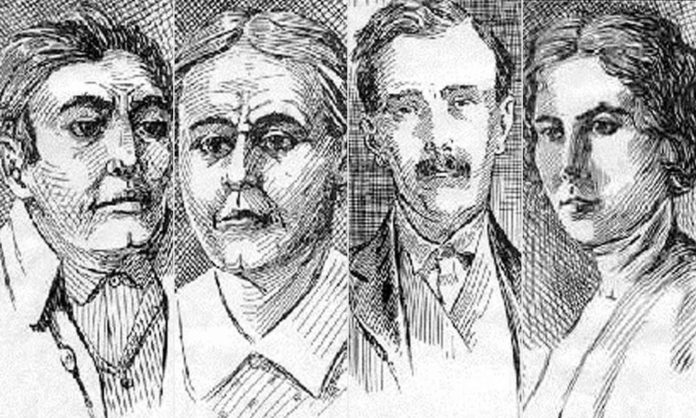In an article for Writer’s Digest, Camilla Bruce offers advice on writing historical fiction with a true crime twist. “Writing historical fiction is in many ways like writing from a different planet,” she says. “The world you describe isn’t there anymore, so no matter how much research you do, you will still not be able to capture it entirely.”
This can be especially challenging when true crime is your inspiration. Then, as now, the media was sensationalist and biased and sometimes didn’t let facts get in the way of a good story or a headline that would help sell papers. However, that can also be part of the fun. “Even if a story is true, there is a lot of blank spaces, and if you are wired somewhat like me, those blank spaces can be like catnip for the brain,” Bruce says.
The characters involved often provide the largest blank canvas. “Even if you know the facts of what a person has done in their life, it doesn’t necessarily explain what went on in their head; what they felt and what drove them,” Bruce writes. “Sometimes that blank space can compel you to want to come closer to a story, to crawl in under a character’s skin to try and understand them from the inside out.”
When writing historical fiction, you can’t just make things up, otherwise your novel is simply fiction-fiction, inspired by true events. Bruce finds herself somewhere in the middle, using facts as a cornerstone of her story. “It is a little like working with an outline that someone else has made,” she says. She takes the same approach for characters. “I scour the sources for physical and behavioral descriptions to build my cast,” she explains. “I also draw on quotes from things they have said, and take a look at their actions to make somewhat informed decisions.” Using the history of the times and some armchair psychology, Bruce fleshes out her characters to help explain their actions.
That doesn’t mean you have to stick to strict factual presentation when the story demands otherwise. “Sometimes it’s because real people are messy, and their behavior can clutter up the narrative without adding anything to it,” Bruce says. “They also tend to repeat themselves and do the same thing many times over, when one time would suffice, narratively speaking. Other times, I need a point of view that I can’t find among the historical characters, so then I have to invent someone.” Unless your historical figure is well-known, there’s a good chance you’ll find only a scanty biography, so you have to make creative, educated guesses to fill in the blanks.
Crucially for historical crime, you have to decide what story to tell. “Do you want it to be the victim’s story, the criminal’s story, or both?” Bruce asks. “Do you want it to be a psychological portrait, an action-packed thriller, or something in between? Once you know, you can look at the facts—and the rumors and the lies—and puzzle them together in the way that serves your narrative best.”












